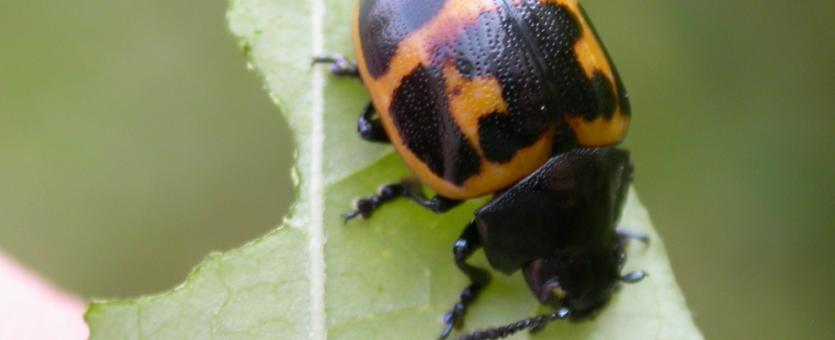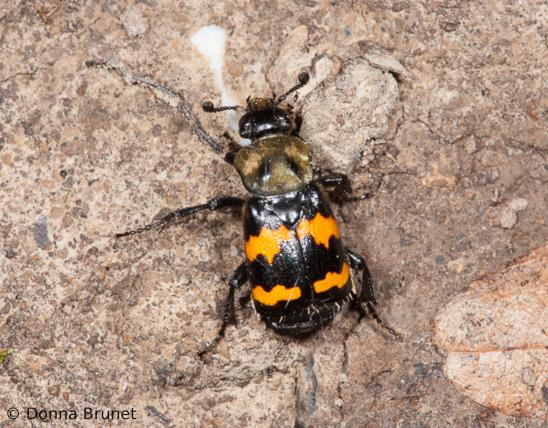
The swamp milkweed leaf beetle is found on the various milkweeds it eats, often in grassy areas or on roadsides. The exact pattern of orange and black varies among individuals.
Adult swamp milkweed leaf beetles can be nearly ½ inch long. When feeding on milkweeds, they start by clipping the side veins off the leaves, draining the sticky, toxic sap that is the plant's defense against herbivores.
It is just one of about 2,000 species of leaf beetles in North America, and many of them are quite colorful.
Learn more about this and other leaf beetles (chrysomelids) on their group page.
Food
Swamp milkweed leaf beetles' favorite food plant is swamp milkweed (Asclepias incarnata), but it also eats other types of milkweeds and other members of the dogbane family.
Life Cycle
Mating typically occurs on a milkweed plant, and the females attach eggs to the leaf undersides. The pudgy orange or gray larvae (which have a row of black dots along the side, and a black collar) feed on milkweed leaves; when ready to pupate, they drop to the ground to pupate. The adults overwinter amid the shelter of leaves, often within the fuzzy basal whorls of mullein leaves.




























